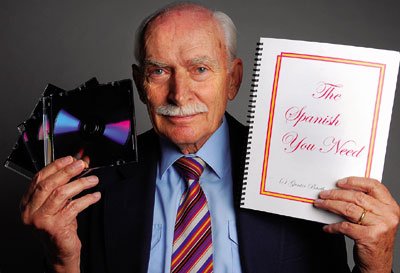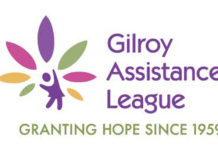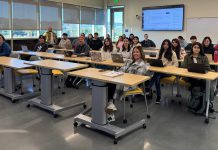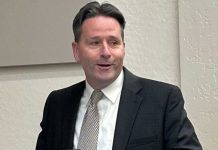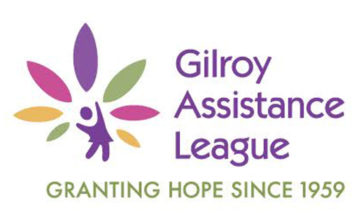Adults learning a second language often struggle with simple
syntax and grammar that 5-year-old native speakers have easily
mastered.
Gunter Barth, a retired language teacher from Germany, saw this
on a daily basis during his 40 years teaching English, Spanish and
German as second languages to California students.
Adults learning a second language often struggle with simple syntax and grammar that 5-year-old native speakers have easily mastered.
Gunter Barth, a retired language teacher from Germany, saw this on a daily basis during his 40 years teaching English, Spanish and German as second languages to California students.
Born in Germany in 1930, Barth was a teen during World War II and remembered developing a love for languages in high school.
“I lived in East Germany when I was 15 and everyone was working on their Russian,” Barth said. “I was working on my English because there was no way I was staying there!”
After moving to California when he was 27, Barth taught at several different language institutes, public and private, around the state. His first job was at the Berlitz language center in Palo Alto, a branch of the largest language school in the world. There, he learned to instruct in the direct method, a style of teaching languages that emphasizes conversational, practical speech and prohibits the learner from using his native language.
After his eight years at Berlitz where he served as Director and Program Advisor, Barth opened his own school, Century School of Languages in San Jose, where he added his own ideas to enhance the way his students learned and spoke foreign languages. At Century, Barth worked with a range of students, from the mayor of San Jose and San Jose State University students and administrators to small business owners.
“I can tell you first hand that they are a top-notch institution, professionally run with effective instruction methods,” wrote former Mayor Janet Gray Hayes in a letter of recommendation.
“Your school’s program was instrumental in assisting our students in completing their language requirement,” wrote SJSU Associate Dean Rodolfo Arevalo in a letter of thanks to Barth. “The success rate for those students that were trained by Century was very high. This speaks well of your staff and their ability to show results in a short time period.”
High school and college students usually take several years of a foreign language, learning the excruciating details of grammar and syntax, and promptly forgetting the material if they don’t practice on a daily basis. Barth condemns this traditional method that many teachers use in the classroom. His one-on-one approach with students and insistence on speaking in only the second language forces students to use their existing vocabulary to communicate. They do not have their native language to fall back on. With the direct method, pupils learn their second language naturally, in the way that children pick up their native language. Rote repetition ingrains the language on the student.
After selling the Century School in 1985, Barth semi-retired, volunteering his language expertise at libraries and hospitals and teaching English on a part-time basis.
“Mr. Barth analyzes and tailors his approach to targeting each student’s needs,” said Lisa Rutherford, director of Banning Public Library in Southern California where Barth volunteered his services for 11 years. “His experience has made him not only a skilled instructor but equally an ambassador for many to the gateway of a life of learning and enrichment.”
Barth used this highly effective method to teach his native German, English and Spanish at Hazel Hawkins Memorial Hospital in Hollister, Saint Louise Regional Hospital in Gilroy and at Gavilan Community College. Rather than having students plow through hundreds of pages of textbook material, Barth trained his students to think in their second language, rather than reading the language and then internally translating it.
“In order to communicate effectively in a foreign language, we have to accept it on its own terms and, in fact, begin to think in that language,” Barth said. “It is impossible to speak a foreign language and understand it while thinking in English.”
His one-on-one approach also addressed the specific vocabulary needs of each student. “A hairdresser needs a different vocabulary than a waitress,” he said.
“I liked the fact that the class was more focused on speaking Spanish rather than on reading and writing,” said Angela Vasquez, a nurse at Saint Louise who took Barth’s class to improve her use of Spanish in the workplace.
Although Barth is retired, he continues to share his method of learning languages with the community. He has developed a program called Phase One Language Learning that he says allows students to progress at their own learning rate and produces “remarkable results” in three months. Language learners can learn more about his method and materials at www.phase1language.com.
Simone Wamplar, a retired language teacher of 20 years, confirmed the effectiveness of Barth’s program.
“You learn the language as you use it more, like when you’re a child,” she said in a heavy French accent. Like Barth, she is a proponent of the direct method. “It’s the best way to learn.”
“The biggest barrier to learning a second language is the strength of the first language. Most people are constantly translating back,” Barth said. “Here you learn to not only speak, but think, in another language.”


